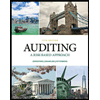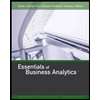
Concept explainers
a.1.
To explain: Dividend policy.
Introduction:
Stock Dividend:
When company decides to pay dividend in the form of shares instead of cash to its shareholders due to the shortage of liquid cash, itis said to be a stock dividend or scrip dividend
2.
To explain: Dividend irrelevance theory and assumptions underlying the theory.
3.
To explain: Reason for the investors choosing high dividend paying stocks and pay low or nonexistent dividends
b.(1)
To discuss: The information content or signaling, hypothesis.
(2)
To discuss: Clientele effect.
(3)
To explain: Catering theory.
(4)
To explain: The effect of catering theory on dividend policy.
c.1.
To calculate: Amount to be raised through equity.
2.
To calculate: Payout ratio and the effect on it under the residual dividend model.
3.
To explain: advantages and disadvantages of residual policy.
d.
To determine: The series of steps that many company’s take in setting dividend policy in practice.
e.
To explain: dividend reinvestment plan and its working.
f.
To explain: Stock dividends, stock splits and their advantages as well as disadvantages.
g.
To explain: Stock repurchase and its advantages and disadvantages.
Trending nowThis is a popular solution!

Chapter 14 Solutions
Fundamentals of Financial Management, Concise Edition
 Auditing: A Risk Based-Approach (MindTap Course L...AccountingISBN:9781337619455Author:Karla M Johnstone, Audrey A. Gramling, Larry E. RittenbergPublisher:Cengage Learning
Auditing: A Risk Based-Approach (MindTap Course L...AccountingISBN:9781337619455Author:Karla M Johnstone, Audrey A. Gramling, Larry E. RittenbergPublisher:Cengage Learning Managerial AccountingAccountingISBN:9781337912020Author:Carl Warren, Ph.d. Cma William B. TaylerPublisher:South-Western College Pub
Managerial AccountingAccountingISBN:9781337912020Author:Carl Warren, Ph.d. Cma William B. TaylerPublisher:South-Western College Pub Financial And Managerial AccountingAccountingISBN:9781337902663Author:WARREN, Carl S.Publisher:Cengage Learning,
Financial And Managerial AccountingAccountingISBN:9781337902663Author:WARREN, Carl S.Publisher:Cengage Learning, Cornerstones of Cost Management (Cornerstones Ser...AccountingISBN:9781305970663Author:Don R. Hansen, Maryanne M. MowenPublisher:Cengage Learning
Cornerstones of Cost Management (Cornerstones Ser...AccountingISBN:9781305970663Author:Don R. Hansen, Maryanne M. MowenPublisher:Cengage Learning Essentials of Business Analytics (MindTap Course ...StatisticsISBN:9781305627734Author:Jeffrey D. Camm, James J. Cochran, Michael J. Fry, Jeffrey W. Ohlmann, David R. AndersonPublisher:Cengage Learning
Essentials of Business Analytics (MindTap Course ...StatisticsISBN:9781305627734Author:Jeffrey D. Camm, James J. Cochran, Michael J. Fry, Jeffrey W. Ohlmann, David R. AndersonPublisher:Cengage Learning





